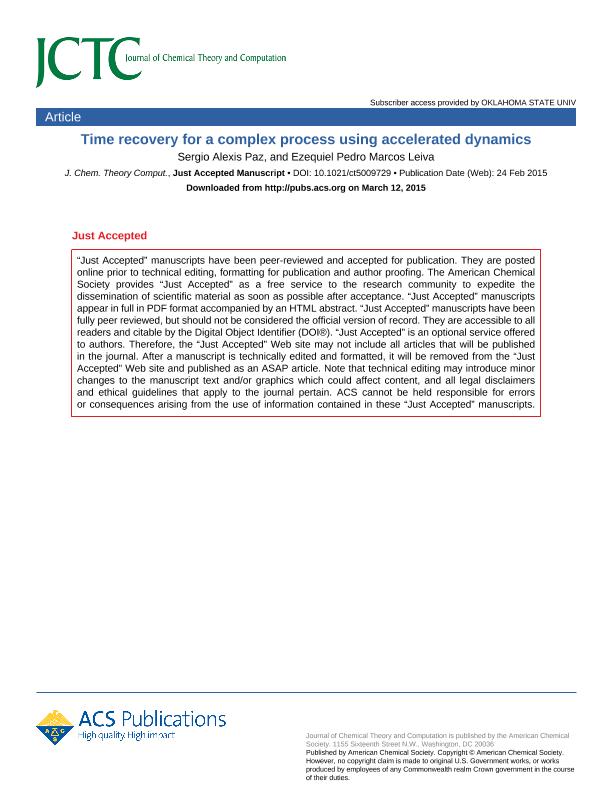Artículo
Time recovery for a complex process using accelerated dynamics
Fecha de publicación:
24/02/2015
Editorial:
American Chemical Society
Revista:
Journal of Chemical Theory and Computation
ISSN:
1549-9618
e-ISSN:
1549-9626
Idioma:
Inglés
Tipo de recurso:
Artículo publicado
Clasificación temática:
Resumen
The hyperdynamics method (HD) developed by Voter (J. Chem. Phys. 1996, 106, 4665) sets the theoretical basis to construct an accelerated simulation scheme that holds the time scale information. Since HD is based on transition state theory, pseudoequilibrium conditions (PEC) must be satisfied before any system in a trapped state may be accelerated. As the system evolves, many trapped states may appear, and the PEC must be assumed in each one to accelerate the escape. However, since the system evolution is a priori unknown, the PEC cannot be permanently assumed to be true. Furthermore, the different parameters of the bias function used may need drastic recalibration during this evolution. To overcome these problems, we present a general scheme to switch between HD and conventional molecular dynamics (MD) in an automatic fashion during the simulation. To decide when HD should start and finish, criteria based on the energetic properties of the system are introduced. On the other hand, a very simple bias function is proposed, leading to a straightforward on-the-fly set up of the required parameters. A way to measure the quality of the simulation is suggested. The efficiency of the present hybrid HD–MD method is tested for a two-dimensional model potential and for the coalescence process of two nanoparticles. In spite of the important complexity of the latter system (165 degrees of freedoms), some relevant mechanistic properties were recovered within the present method.
Palabras clave:
Accelerated Dynamics
,
Hyperdynamics
,
Nanoparticle Coalescence
,
Hybrid Method
Archivos asociados
Licencia
Identificadores
Colecciones
Articulos(INFIQC)
Articulos de INST.DE INVESTIGACIONES EN FISICO- QUIMICA DE CORDOBA
Articulos de INST.DE INVESTIGACIONES EN FISICO- QUIMICA DE CORDOBA
Citación
Paz, Sergio Alexis; Leiva, Ezequiel Pedro M.; Time recovery for a complex process using accelerated dynamics; American Chemical Society; Journal of Chemical Theory and Computation; 11; 4; 24-2-2015; 1725-1734
Compartir
Altmétricas




